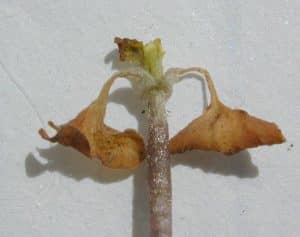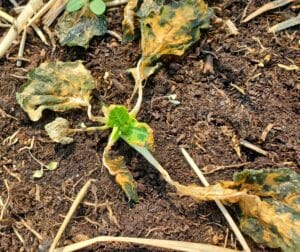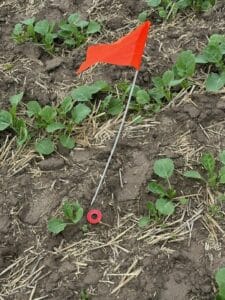After spring frost, wait a few days to accurately determine how many plants survived and whether the remaining stand is still uniform. Be patient before making any decisions. Check a few places across the whole crop the day after a frost and then again three to four days after a frost to assess the situation. The Canola Encyclopedia has more on how to assess frost damage.


The day before. Crop susceptibility to frost can depend on temperatures in the days leading up to the frost event. Canola plants that experienced a few cool days before the frost are acclimatized – or “hardened” – to cool conditions. Canola plants growing through hot days and warm nights are often more susceptible to frost.
Light frost
With a light frost of 0°C to -2°C, the risk of crop damage is usually minimal. Damage can be unpredictable, but canola has shown resilience to light frost.
Heavy frost
With a heavy frost that kills leaves, new leaves will take a few days to start emerging from the growing point. If no growth occurs within this time, the plant is likely dead. Also, if the stem is pinched off or the plant flops over, the plant will likely die. The pinched off or broken stem cannot provide nutrients to the growing point. Important: Dead cotyledons do not mean a dead plant. If the hypocotyl is green and healthy in the days after the frost, this plant has likely survived and will soon put out a first leaf.
Wait a few days
The quickest way to accurately assess recovery is to mark individual plants that could recover and recheck these plants over the following few days. Try a “frost washer“. This idea came from a farmer who paints washers red, green and yellow and rings them over little seedlings he wants to come back and check again. He puts a red washer over seedlings he thinks are dead, a green washer over seedlings that look like they might live and a yellow washer around seedlings that are borderline. He marks the test spot with a flag or GPS, then returns every few days to check on them. It’s a good tool to train the eye and also make accurate assessment of the exact same plants.

The re-seed decision
If many plants have been killed, the question is whether to reseed. It takes a few days to determine the kill rate. If one or two plants per square foot have survived and if that stand is fairly consistent throughout the field, the best choice may be to leave it alone. How to work through the re-seed decision.